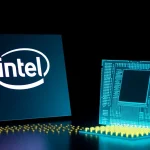Apple iPhone 18 Simplifies Camera Control Button and iPhone 20 Haptics

The iPhone series has always been at the forefront of innovation, captivating users with each new release. As the iPhone 17 finds its way into the hands of consumers, the excitement shifts towards the upcoming iPhone 18 and the highly anticipated iPhone 20. Both devices are poised to bring significant changes, particularly in terms of design and functionality.
Recent rumors suggest that Apple is on a path to simplify its button layouts, moving from mechanical buttons to more advanced solid-state options. This shift not only aims to enhance user experience but also reflects broader trends in smartphone design. Let’s delve into the specifics of these upcoming models and what users can expect.
The iPhone 17 lineup introduced a sophisticated camera control button that utilizes both capacitive and pressure-sensitive technology beneath a sapphire crystal surface. This design is intended to provide users with a responsive experience, allowing for various touch gestures.
However, a recent leak from a source known as Setsuna Digital on Weibo indicates that Apple may simplify this design for the iPhone 18. The report suggests that the upcoming model will eliminate the capacitive induction layer in favor of a more streamlined pressure-sensing layer. This change aligns with approaches taken by several Chinese smartphone manufacturers, like Oppo and Vivo, which have effectively implemented pressure-sensitive controls in their flagship devices.
The iPhone 20, expected to launch in 2027, is rumored to take this evolution a step further. It is anticipated that Apple will phase out mechanical buttons entirely, introducing solid-state buttons for key functionalities, including:
- Volume controls
- Power on/off functions
- Camera control
These solid-state buttons are expected to feature bespoke haptic feedback technology, simulating the feel of a mechanical button while minimizing physical wear and tear. This innovation not only promises to enhance durability but also makes repairs more cost-effective and simpler for users.
Solid-state buttons operate without any moving parts, relying instead on haptic feedback to create the sensation of a physical button press. This technology employs small actuators that vibrate to provide tactile feedback, simulating the experience of pressing a traditional button.
Advantages of solid-state buttons include:
- Increased durability due to fewer moving components
- Reduced likelihood of mechanical failure over time
- Enhanced design flexibility, allowing for sleeker device aesthetics
With the iPhone 20's anticipated design resembling a seamless glass slab with curved edges, solid-state buttons could play a crucial role in achieving a borderless display that enhances the overall user experience.
Comparing the iPhone 18 and iPhone 20: Design and functionality
As we look ahead to the iPhone 18 and the iPhone 20, it's essential to understand how these devices will compare in terms of design and functionality. The iPhone 18 will serve as a stepping stone toward the more radical changes expected in the iPhone 20.
Key differences between the two models may include:
| Feature | iPhone 18 | iPhone 20 |
|---|---|---|
| Camera Control Button | Simplified mechanical | Solid-state with haptic feedback |
| Display Design | Traditional bezels | Curved, borderless |
| Durability | Standard mechanical | Enhanced solid-state |
Expected features of the iPhone 18
As the iPhone 18 approaches its launch, several features are already generating buzz among tech enthusiasts. Besides the simplified camera control button, users can expect significant upgrades in performance, camera capabilities, and overall user experience.
Some anticipated features include:
- Improved processing power with the latest A-series chip
- Enhanced camera system with better low-light performance
- Refined user interface with iOS 18 integration
Looking ahead: The iPhone 20 and its potential impact
The iPhone 20's introduction marks a significant milestone for Apple, coinciding with the 20th anniversary of the original iPhone. This model is expected to push the boundaries of smartphone design further, embracing a more futuristic aesthetic and innovative technology.
With solid-state buttons, users can anticipate a more streamlined and immersive experience, as haptic feedback technology enhances interaction without compromising design integrity. The shift to a glass slab design could redefine what consumers expect from mobile devices, setting a new standard for competitors to follow.
For more insights into Apple's evolving technology and the expected features of its next iPhones, you might find this video informative:
As Apple continues to innovate, the journey towards a more seamless user experience remains a priority. The upcoming releases promise to deliver not only cutting-edge technology but also a refined aesthetic that aligns with modern consumer expectations.




Leave a Reply